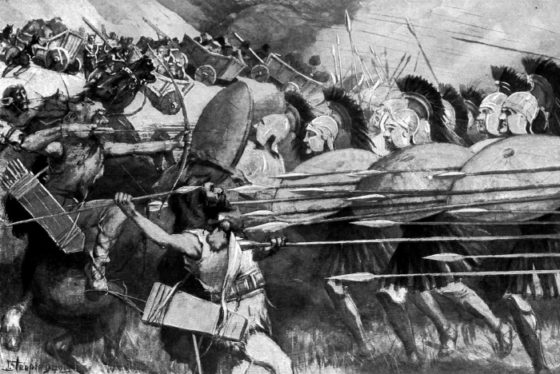

Jorgen Jorgenson had a most peculiar résumé. Born in 1780, the Denmark native could claim such varied careers as sailor, privateer, writer, revolutionary, explorer, gambler, policeman, felon and even spy. But Jorgenson fancied a more grandiose job title: King of Iceland. In fact, the one-time British navy officer sailed to the isolated Atlantic territory, chased its rightful governor from office and declared himself ruler. Unfortunately, this most uncommon of commoners’ shot at royalty simply didn’t take. Here’s the story.
Jorgenson’s life of adventure began at the age of 15 when the young Dane took a berth on a British coal ship. There he would spend the next four years sailing the North Sea, the Atlantic and even the South Pacific. While on a voyage to Australia, Jorgenson joined HMS Lady Nelson where he served as an officer. During his time aboard, the six-gun cutter charted the Australian coastline and even helped establish the earliest permanent British settlement on Tasmania.

At the age of 27, Jorgenson gave up his commission and returned to his native Denmark, which was fast becoming an enemy of Britain. In fact, he arrived home just in time to bear witness to the bombardment of Copenhagen by ships of the Royal Navy. The assault destroyed a third of the city and killed nearly 5,000 people. The two-week campaign sprung from the Danes’ reluctance to turn its navy over to the British, lest it fall into Napoleon’s hands. By Sept. 5, 1807, 50 English warships pounded the capital into submission, after which the combined Danish-Norwegian fleet, which included 18 ships of the line and 16 frigates, was reluctantly turned over to King George.
Following the action, Jorgenson sought revenge against his adopted homeland. Because of his extensive experience at sea, he was given command of the 28-gun privateer vessel Admiral Jawl. With his crew of 83 men, the 28-year-old captain captured cargo ships up and down England’s North Sea coast.
On March 2, 1808, while trying to overhaul a small convoy of enemy merchantmen off North Yorkshire, Jorgenson’s ship was attacked by the 18-gun HMS Sappho. After a brief exchange of broadsides, the Admiral Jawl struck her colours and Jorgenson and his crew were captured. In accordance with the customs of the time, the British paroled the Danish mariner at set him at his liberty. His career prospects diminished, Jorgenson took what work he could. Ironically, the seasoned mariner was right back where he started: working as a crewman aboard an English trade vessel.
While serving as a translator, Jorgenson suggested to the skipper that the isolated Danish territory of Iceland might make a lucrative trading destination. Yet, after arriving with a hold filled with goods, the English ship was denied permission to unload by the island’s governor, Frederich Christopher.
Jorgenson returned to England in 1810 and outfitted his own vessel for another attempt to open up Iceland’s market. Once again the governor balked. At this, Jorgenson, who it seems had become something of a revolutionary, arrested Christopher and declared himself ruler of Iceland.
The self-proclaimed protector of the Nordic island pledged to bring back the ancient Icelandic legislature known as the Althing, which Denmark had abolished a decade earlier. He also envisioned forging ties with the United States and any liberal-minded nations on the Continent.
Jorgenson’s stewardship of Iceland lasted only two months. It ended when the captain of the Royal Navy sloop HMS Talbot had the self-styled monarch arrested — not for usurping Danish authority, but rather for violating the terms of his earlier parole. Jorgenson was clapped in irons and taken back to England where he was briefly imprisoned. Once released, he tried unsuccessfully to earn a living in London as a gambler. After a number of stays in debtors’ prison, the British government recruited the shiftless Dane to work as a spy in Europe. After the fall of Napoleon, Jorgenson returned to England and was once again imprisoned, this time for theft. In 1820, another conviction resulted in his banishment to Australia. Following his release, Jorgenson stayed in the colony voluntarily. Eventually the governor of Van Diemen’s Land on Tasmania gave the aging adventurer a job in the local constabulary. He married in 1831 and ten years later died.
Jorgenson’s turbulent life has inspired more than a few books, including:
The English Dane by Sarah Blackwell and The Usurper by Dan Sprod.










A fascinating story. I’m surprised there has not been a movie about him starring George Clooney 😉